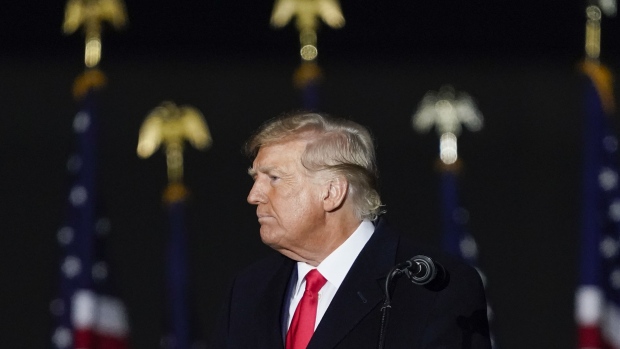Dec 30, 2022
Trump tax returns give first glimpse at data he fought to hide
, Bloomberg News

A House panel released six years of Donald Trump’s tax returns, the culmination of a years-long battle between Democrats and the former president who exhausted all legal options to keep his financial records private.
The returns, which include his personal and business filings from 2015 to 2020, are the first complete look into Trump’s tax records for the years he was running for office and in the White House. The release comes just days before Democrats relinquish their House majority, which will end much of their ability to investigate him.
The documents shed light on the sources of the president’s earnings and the taxes he paid, including in 2020, when he paid nothing in federal income tax. Trump reported large losses at his businesses thanks to favorable deductions that allowed him to minimize his tax bills. Congress’s non-partisan tax experts have said some of those deductions warrant more scrutiny.
Tax returns are intended to report income — not total wealth — so the documents don’t reveal Trump’s net worth. Even business returns only report the purchase price for an asset, such as a building, not the valuation.
The Democratic-controlled House Ways and Means Committee released the returns Friday as part of their investigation into the Internal Revenue Service’s presidential audit program, which found that the agency had failed to examine Trump’s tax returns while in office, as has been done with previous presidents. A report last week summarized Trump’s tax filings and flagged dozens of potential audit triggers that the IRS didn’t pursue.
Trump’s use of business losses to minimize his tax bill is legal as long as he didn’t under-report earnings or inflate the size of the deductions, which can only be determined from a comprehensive audit.
Trump paid no taxes in 2020, reporting losses at dozens of properties and holding companies. The coronavirus pandemic almost certainly played a role. An Irish golf resort he owned reported a 69 per cent plunge in revenue in 2020.
Some properties still made money. Losses of US$65.9 million at a variety of entities were offset by $54.5 million in gains at others.
MORE DETAILS
The returns also give more insight into how Trump was affected by his 2017 tax law, which included levy breaks and expanded write-offs for some top earners.
For example, in 2019, Trump’s return says, he paid $8.4 million in state and local taxes, but could only claim $10,000 under his tax law. The following year was similar: $8.5 million paid but subject to the $10,000 cap.
“These findings underscore the fact that our tax laws are often inequitable, and that enforcement of them is often unjust,” Representative Don Beyer, a Democrat on Ways and Means, said in a statement. “Trump was able to bypass even the mandatory IRS presidential audit program for years, but many other wealthy and powerful people evade billions in tax dues every year through more quotidian tax avoidance.”
Representative Kevin Brady, the top Republican on the panel, said that releasing Trump’s tax returns was a grievous mistake and it will lead to the leaders of future Congress’s to publish the tax information of “private citizens, political enemies, business and labor leaders or even the Supreme Court justices themselves.”
“In the long run, Democrats will come to regret it,” he said in a statement.
The House passed legislation last week that would mandate that the IRS conduct an annual audit of the president and then release the tax returns and examination results publicly. But the Senate did not act on it before adjourning for the year.
Such a bill would serve as a backstop for future presidential candidates who buck the decades-long tradition of making tax records public during the campaign.
It’s unclear whether it could become law next year. Senate Democrats have pledged to take up the bill, but House Republicans, who will soon have a majority in the chamber, have criticized the proposal.
